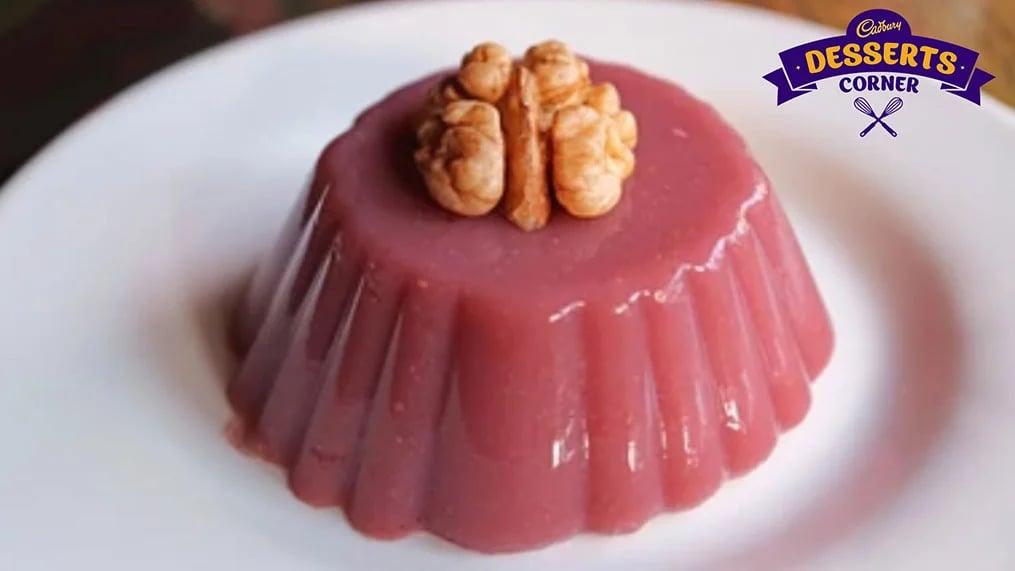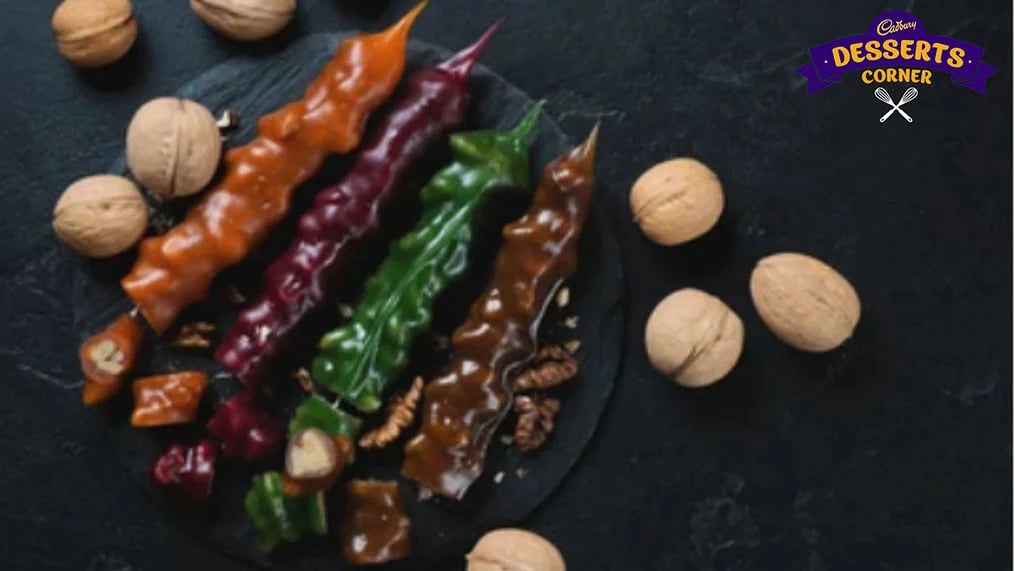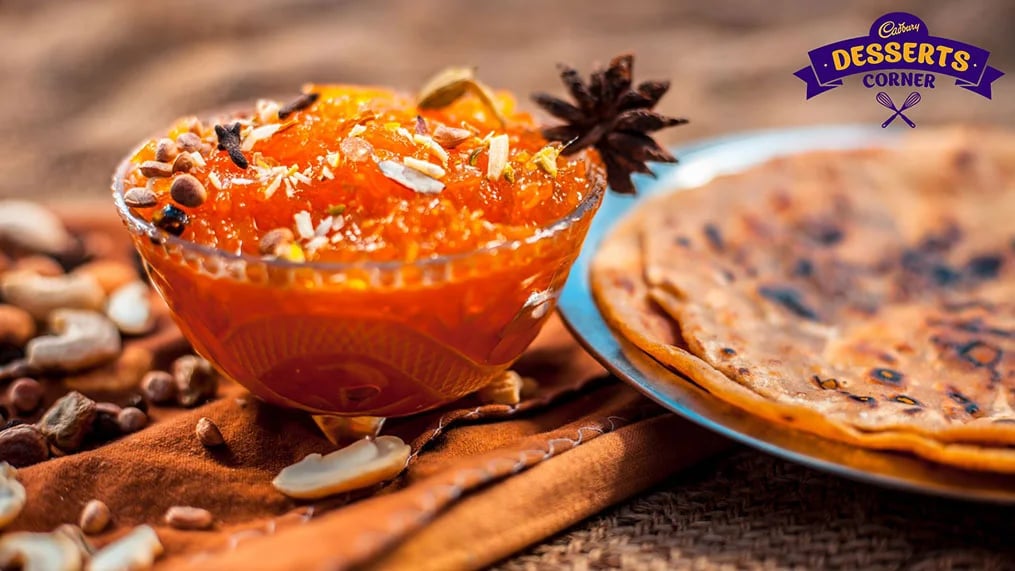From little kids to adults, the underrated gems of Georgia’s desserts are wholesome and enjoy great cultural significance in the almost fairytale-like region of Georgia.
.webp?width=768&height=432&name=feature-image-updated%20(1).webp)
From little kids to adults, the underrated gems of Georgia’s desserts are wholesome and enjoy great cultural significance in the almost fairytale-like region of Georgia.
Tucked away among the foothills of the Caucasus region and bordered by the Black Sea, Georgia has a lot to offer in terms of desserts from rich, jiggly puddings that are the epitome of comfort to sweet candy that are sold by vendors and are displayed in colorful strings on streetside. Very underrated Georgian desserts might not be as well known but their desserts have a huge cultural significance and are also symbolic of celebration and togetherness.
1.Tatara or Pelamushi

In Georgia, two traditional grape-based desserts are enjoyed - Pelamushi in the west and Tatara in the east. Both start with badagi, the region's prized sweet grape juice. For Pelamushi, the juice is boiled in a saucepan in the western city of Tbilisi and the surrounding Kakheti region. There, locals mix it with cornflour to thicken the mixture into a silky pudding. Further east, Tatara is the preferred name, using wheat flour instead of cornmeal. Whichever version is made, the bubbling grape-flour mixture requires constant stirring over low heat. Once thickened, a touch of sugar is stirred in before pouring the hot liquid into molds. As it cools and sets, the dessert achieves a lovely wobbly texture. Pelamushi and Tatara can be enjoyed either warm or chilled.
2.Churchkhela

Dipping nuts or fruits into thickened grape pulp creates the signature Georgian candy called churchkhela. Strings of nuts, traditionally walnuts or hazelnuts, are layered with the sugary pulp and left to dry in the sun, crystallizing into a long, fruity treat. Freshly made churchkhela are commonly found being sold by street vendors across Georgia. Recipes and preparations are treasured traditions passed down through families, with some variations using different nuts, fruits or thickeners like wheat flour or cornmeal. Grapes and wine are deeply ingrained in Georgian culture due to the country's wine production. The portable, high-calorie churchkhela was well-suited to sustain soldiers, earning its nickname as the "Georgian Snickers”.
3.Medok
Medoki, also known as Medok, is a beloved honey cake from Georgian cuisine. Originally called Medovik, the recipe was developed in 19th-century Russia and introduced to Georgia during Soviet rule. Medok is made with thin layers of butter-based sponge cake filled with a creamy frosting. Traditionally, the frosting uses sour cream but Georgian medok substitutes milk cream, imparting a distinctive sweetness. Both the cake and cream are flavored with burned honey, which gives the dessert its signature color and taste. Spices are sometimes added to the cake batter to enhance the flavor profile. While often served on special occasions, many cafes and bakeries offer medok year-round so it can be enjoyed anytime.
4.Muraba

Muraba is a traditional Georgian fruit preserve similar to jam but with a thicker, chunkier consistency. It is made by combining large pieces of seasonal fruits like cherries, quinces or figs with a sweet syrup. As the fruit soaks in the syrup over time, it absorbs the sugar to create a flavorful preserve. The thicker texture of Muraba sets it apart from regular jam, making it ideal for more than just spreading. Its sweetness and intense fruit flavors can be incorporated into other Georgian desserts or enjoyed on bread for breakfast. Popular varieties include cherry, quince, and fig muraba made from locally sourced fruits. Nuts like walnuts are also used to create unique preserves. While muraba tastes delicious straight from the jar, it is commonly found on breakfast tables at guesthouses throughout Georgia.
5.Kada
Kada is a regional pastry that originated in the Meskhetian area of present-day Georgia. Both a pie and bread-like dessert, Kada is difficult to define precisely but is best known for evoking the taste of Georgian childhood. Kada, at its heart, consists of a soft, buttery dough made from wheat flour and lard (pig fat). The dough can be either sweet or savory depending on the filling used. This filling, known as the "heart" of the pastry, also lends Kada its alternative name of Guliani. Despite recipe variations, the shapes and sizes Kada takes on reflect the cultural diversity between Georgia's regions. Round, layered, elongated, and more creative forms add to Kada's appeal. Its dense texture also makes Kada a popular breakfast option for locals and tourists with busy mornings.
6.Kaklucha
While not as popular as Churchkhela, Kaklucha has an interesting history as a special Georgian treat known as the "Royal Candy" or "Orbeliani's Candy". Fittingly, Kaklucha's name echoes its origin as a confection fitting of royalty, created by Princess Mariam Jambakur-Orbeliani, a 19th-20th century noblewoman, feminist and daughter of the illustrious poet for whom the candy is also named. Kaklucha is made of walnuts and caramelized sugar. Its simple main ingredients belie its complex flavors and textures. Each tiny candy resembles a miniature candy apple with a hard shell encasing a creamy filling within which sits a single walnut piece.
Like This Article?
More Like This




Popular Articles





Trending Web Stories
Curated Recipes












.webp?width=1920&height=464&name=feature-image-updated%20(1).webp)





